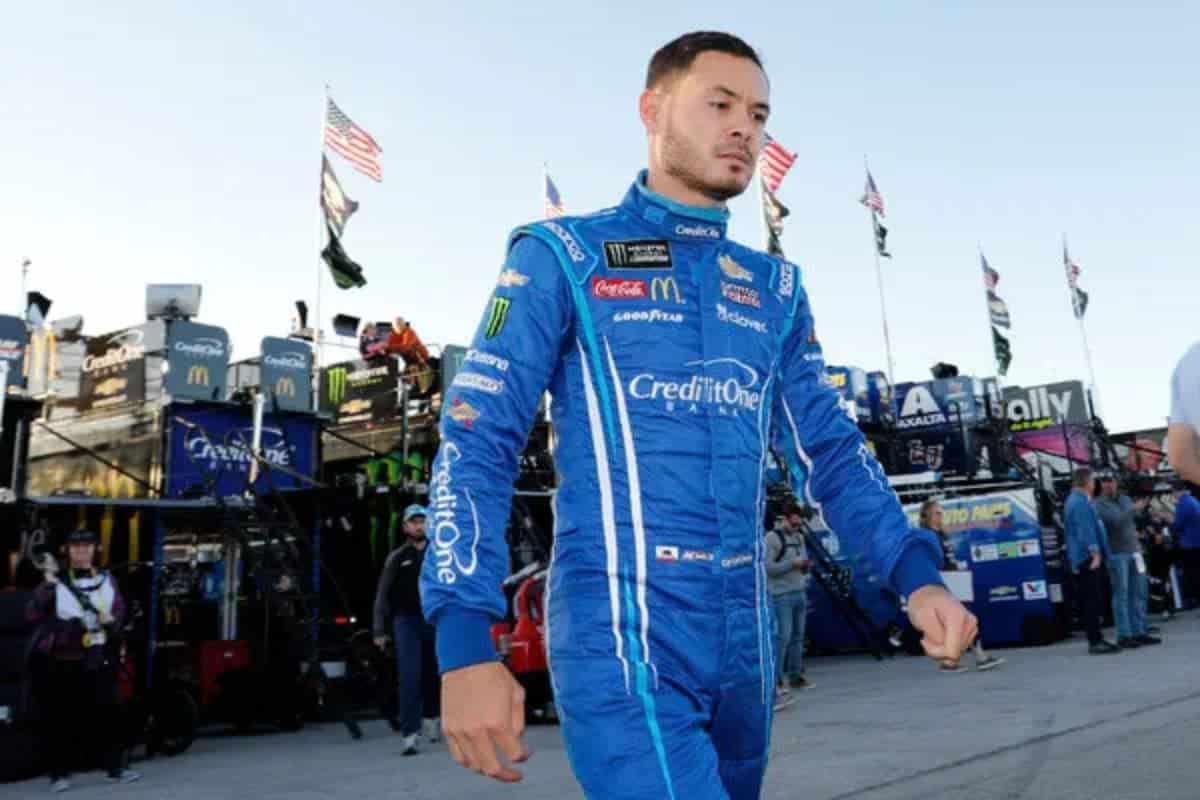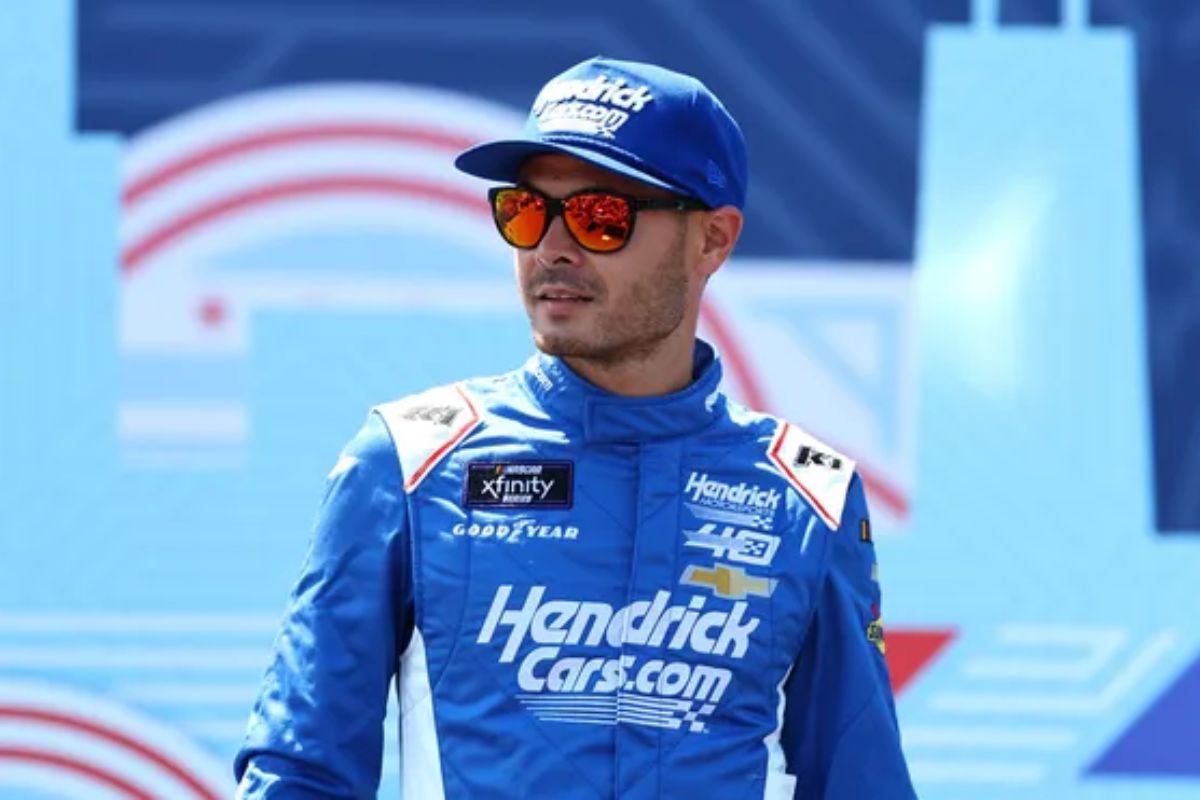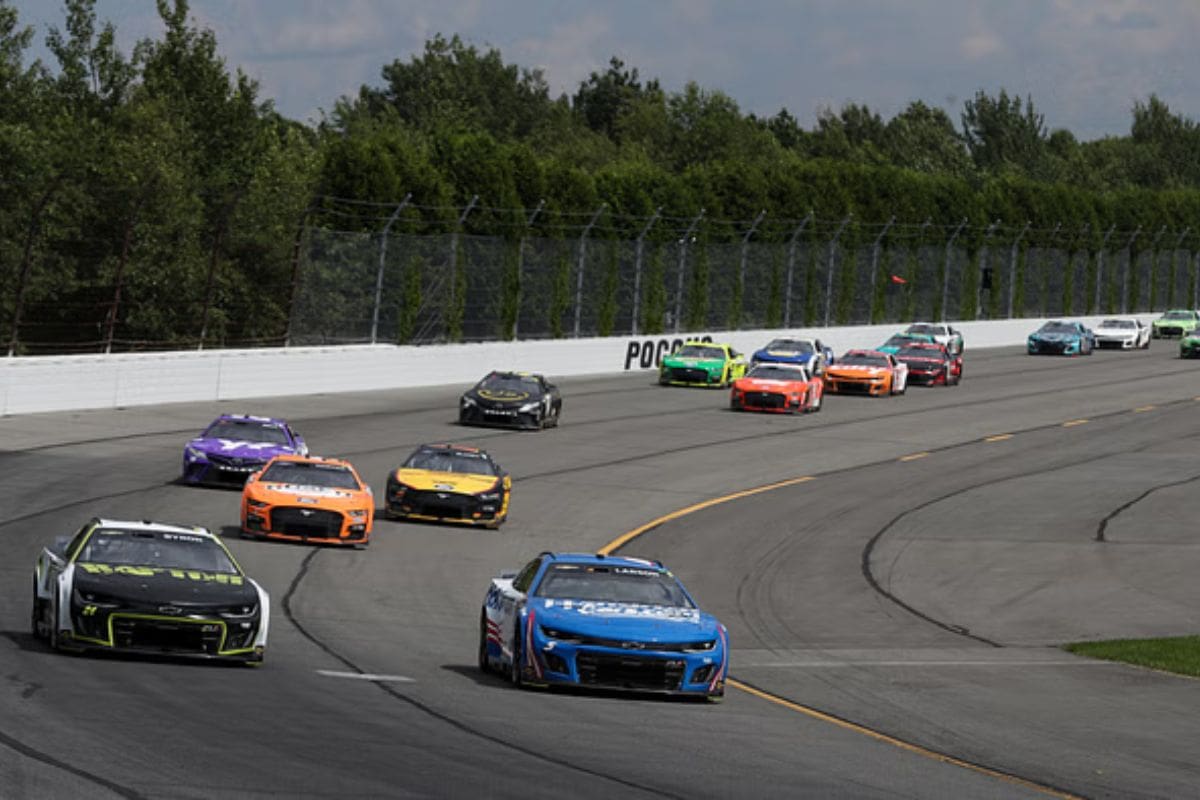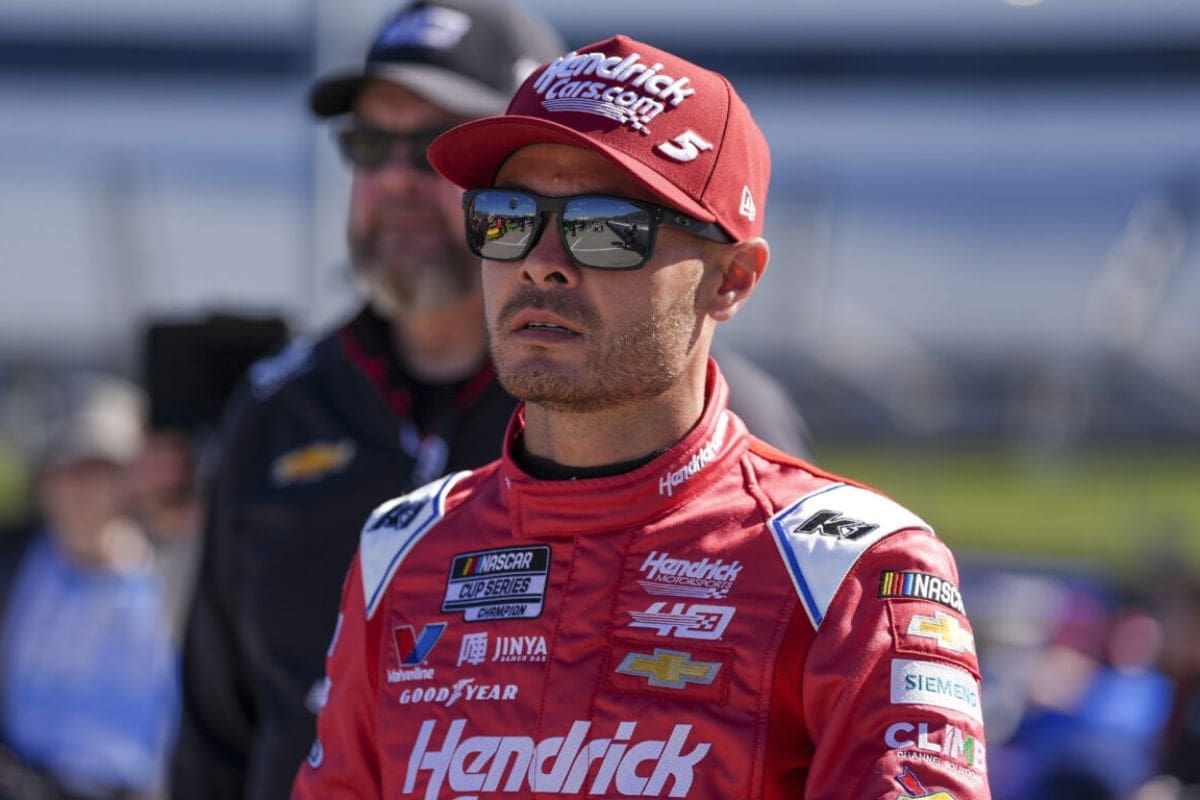NASCAR Shows Bias Towards Kyle Larson: The recent restart controversy at the Brickyard 400 has ignited a notable debate within the NASCAR community, particularly regarding perceived favoritism towards Kyle Larson. Veteran drivers, including Ryan Blaney, have expressed concerns about NASCAR’s officiating decisions, questioning the integrity of the sport when Larson allegedly jumped a restart without facing penalties. This controversy not only highlights the frustrations of competitors but also raises pertinent questions about the consistency of rule enforcement and NASCAR’s commitment to fair competition. As the implications of this incident unfold, the potential impact on the sport’s credibility remains a critical topic for examination.
Key Highlights
- The restart at Brickyard 400 raised allegations of preferential treatment towards Kyle Larson, as critics questioned NASCAR’s enforcement of restart rules.
- NASCAR officials defended the decision, citing unique circumstances that led to a determination that Larson did not jump the restart.
- Veteran Brett Griffin highlighted Larson’s calculated risk-taking, suggesting that the perceived ambiguity benefited Larson during the restart situation.
- Ryan Blaney expressed frustration over the restart handling, emphasizing the perception of bias in favor of Larson among drivers.
Controversy Surrounding Kyle Larson’s Restart
The controversy surrounding Kyle Larson’s restart at the Brickyard 400 has sparked intense debate among fans and analysts, raising critical questions about NASCAR’s enforcement of its restart rules. The incident, characterized by its chaotic nature, has led many to scrutinize whether Larson indeed jumped the restart, a violation that could have warranted considerable penalties.
NASCAR’s regulations regarding restarts are intended to guarantee fairness and competitive integrity, yet the ambiguity surrounding their application is becoming increasingly apparent. In this case, Larson’s timing and execution during the restart have been called into question, prompting discussions about the consistency of officiating within the series. Critics argue that the lack of penalty for Larson could indicate preferential treatment, undermining the credibility of NASCAR’s regulatory framework.
Veteran insider Brett Griffin’s analysis further complicates the narrative, as he articulates the specialized aspects of the restart and its implications. His insights lend credibility to the notion that the situation was not adequately addressed by race officials, thereby igniting debates about the integrity of the sport. The divide among fans and competitors reflects a broader concern: does NASCAR prioritize entertainment over strict adherence to its rules?
Griffin’s Analysis and Larson’s Decision
Brett Griffin’s analysis highlights the complexities surrounding Kyle Larson‘s decision-making during the Brickyard 400 restart, emphasizing the calculated risk he took given his already established wins in the Cup Series. Larson’s position as a driver with a successful track record allowed him the freedom to capitalize on the restart situation, a decision that could be seen as both tactical and opportunistic.
During the crucial moment, Larson appeared to take advantage of a perceived ambiguity regarding control of the restart. Griffin noted that Larson had ‘nothing to lose,’ a sentiment that emphasizes the psychological aspects of racing strategy. With the No. 12 car allegedly firing initially, the chaos surrounding the restart may have played to Larson’s benefit. The discussion among Griffin and his co-hosts suggests that even without the jump, Larson’s lead was likely secure, further reinforcing the notion that he was operating from a position of strength.
“When you’re Kyle Larson and you’ve already got wins in the bank, I mean what do you got to lose?”
“If I’m Kyle Larson, I’d do it too! I mean I would put them in a position to make an uncomfortable call, it’s the wrong call to not call it. But he put them in a pickle and said, ‘call it.’ and guess what? They didn’t call it.” – Griffin
Griffin’s assertion that Larson put NASCAR officials in a ‘pickle’ by forcing them to make a judgment call speaks to the inherent tension in race regulations. Larson’s decision to act decisively in the moment—despite his uncertainty about being the control car—demonstrates a racer’s instinct to seize opportunities, regardless of the potential backlash.
Confusion and Frustration During the Race
Amid the escalating tension of the race, confusion reigned as drivers grappled with the implications of the restart, particularly following Brad Keselowski’s unexpected fuel depletion. This incident not only altered the competitive landscape but also sparked a debate over the legality of the restart itself. As Kyle Larson surged ahead, questions emerged regarding whether he had jumped the start. This crucial moment encapsulated the chaos, with competing narratives creating a classic ‘he said, she said’ scenario that left many in the field unsettled.
Ryan Blaney, positioned favorably before the restart, expressed his frustration vocally over the radio, criticizing NASCAR for allowing the race to continue under what he deemed questionable circumstances. His comments emphasized a broader sentiment among drivers who felt that Larson’s rapid acceleration was less about skill and more about NASCAR’s perceived favoritism towards him. Blaney’s choice of words, referring to Larson as NASCAR’s ‘golden boy,’ highlighted the mounting tension and sense of injustice permeating the race.
NASCAR’s Defense of the Restart Decision
NASCAR officials justified their restart decision by asserting that Kyle Larson did not fundamentally jump the start, given the unique circumstances created by Brad Keselowski’s fuel depletion. The situation was indeed unprecedented; as Keselowski exited the race, the control of the restart shifted to Ryan Blaney. However, Larson’s positioning and tactical maneuvering allowed him to capitalize on the confusion, raising vital questions about the interpretation of the rules during such exceptional scenarios.
NASCAR’s Vice President, Elton Sawyer, emphasized that the rules stipulate the control car cannot change lanes once the race is in motion. This regulation played a substantial role in Larson’s decision to advance, ultimately enabling him to secure the lead. Yet, it is this very ambiguity surrounding the control car’s identity that has sparked considerable debate among fans and analysts similarly regarding the legitimacy of the officials’ call.
Critics argue that while Larson’s actions may not have constituted a clear violation, the lack of clarity in the restart’s execution presents a challenge for NASCAR’s authority. The decision not only favors Larson but also reflects broader implications about consistency in officiating. As veteran commentators have pointed out, the potential consequences of penalizing Larson could have been more detrimental than allowing the restart to stand.
Impact and Future Considerations
The controversy surrounding the restart decision not only raises questions about the immediate implications for Kyle Larson and the Hendrick Motorsports team but also highlights the urgent need for clearer guidelines and consistent enforcement to maintain the sport’s integrity.
As NASCAR approaches its final races, the perception of bias can greatly undermine the confidence of drivers and teams, potentially influencing their performance under stress.
The fallout from this situation may manifest in numerous ways, particularly as Larson and Hendrick Motorsports enter the playoffs. The scrutiny surrounding Larson’s actions during the restart could lead to increased tension on the track, as rival teams may perceive an unfair advantage. This dynamic could alter racing strategies, with drivers adjusting their approaches based on the perceived leniency shown towards Larson.
Moreover, the need for explicit regulations becomes crucial. A lack of definitive rules not only allows for subjective interpretations by officials but can also breed dissent among competitors. If NASCAR does not address this issue, it risks alienating fans and participants who seek transparency and fairness.
Looking forward, NASCAR must prioritize establishing robust frameworks that foster uniformity in rule enforcement. This is vital for restoring confidence among drivers and teams while ensuring that all competitors are given an equitable opportunity to succeed.
News in Brief: NASCAR Shows Bias Towards Kyle Larson
The ongoing controversy surrounding Kyle Larson’s restart highlights considerable concerns regarding NASCAR’s officiating practices and perceived favoritism.
Critiques from veteran drivers emphasize a growing dissatisfaction with the consistency and transparency of rule enforcement.
The implications of this situation extend beyond individual races, potentially eroding trust among competitors and fans in a similar manner.
As NASCAR navigates these challenges, a commitment to equitable treatment and clear communication will be crucial to uphold the sport’s integrity and guarantee fair competition.
ALSO READ: Ryan Blaney’s Radio Rant at Kyle Larson: A Regretful Moment from the Brickyard 400




